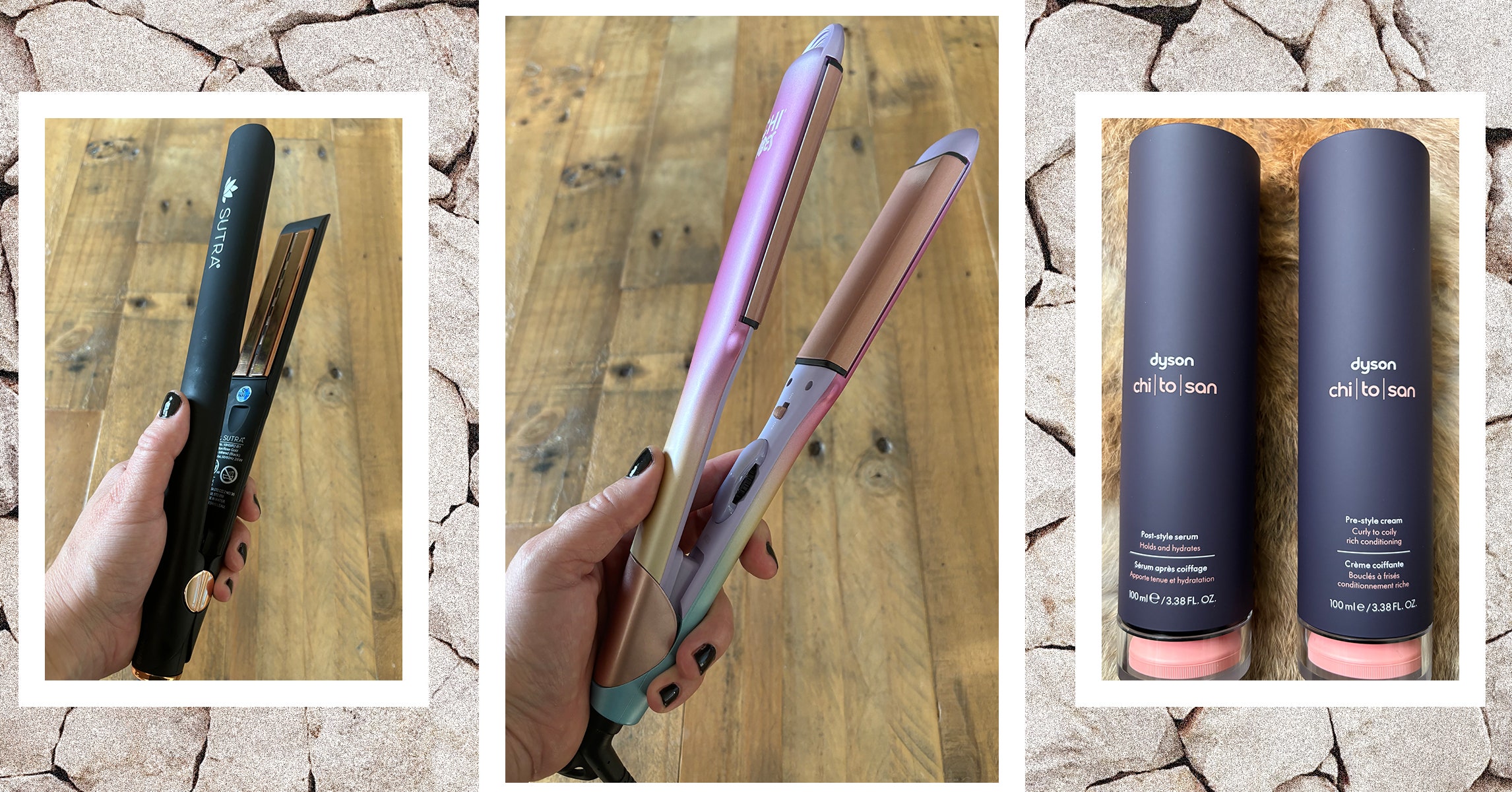Most flat irons come with plates made of either ceramic or titanium, with little explanation on or within the packaging of the differences between the two. Luckily, we’re here to help.
Ceramic plates heat up gently and evenly with fewer hot spots, usually maxing out at a lower temperature than titanium. This makes them less damaging to hair that’s thin, fine, breakable, or color-treated. However, they take longer to heat up than titanium and because they don’t get as hot, they usually necessitate more passes to get hair perfectly flat. This isn’t a problem for hair that’s relatively easy to straighten, but those with especially stubborn curls or texture may find that using ceramic plates makes the whole process take too long, thereby exposing their hair to more heat. Some ceramic plates are also coated or infused with tourmaline, a mineral that emits negative ions to supposedly cancel out the positive ions that cause frizz; copper, which is known for even heating; or aluminum for higher resistance.
Titanium plates heat up much more quickly than ceramic (though typically not as evenly), and they usually can reach a higher temperature—typically 450 degrees Fahrenheit. This means an iron with titanium plates will necessitate fewer passes to get that perfectly straight look, but the higher heat can inflict more damage. Titanium plates are best used by those with thick, coarse, or stubborn hair, and while flat iron users should always use a heat protectant before straightening, those using titanium plates should definitely use one. See below for some staff favorites.

